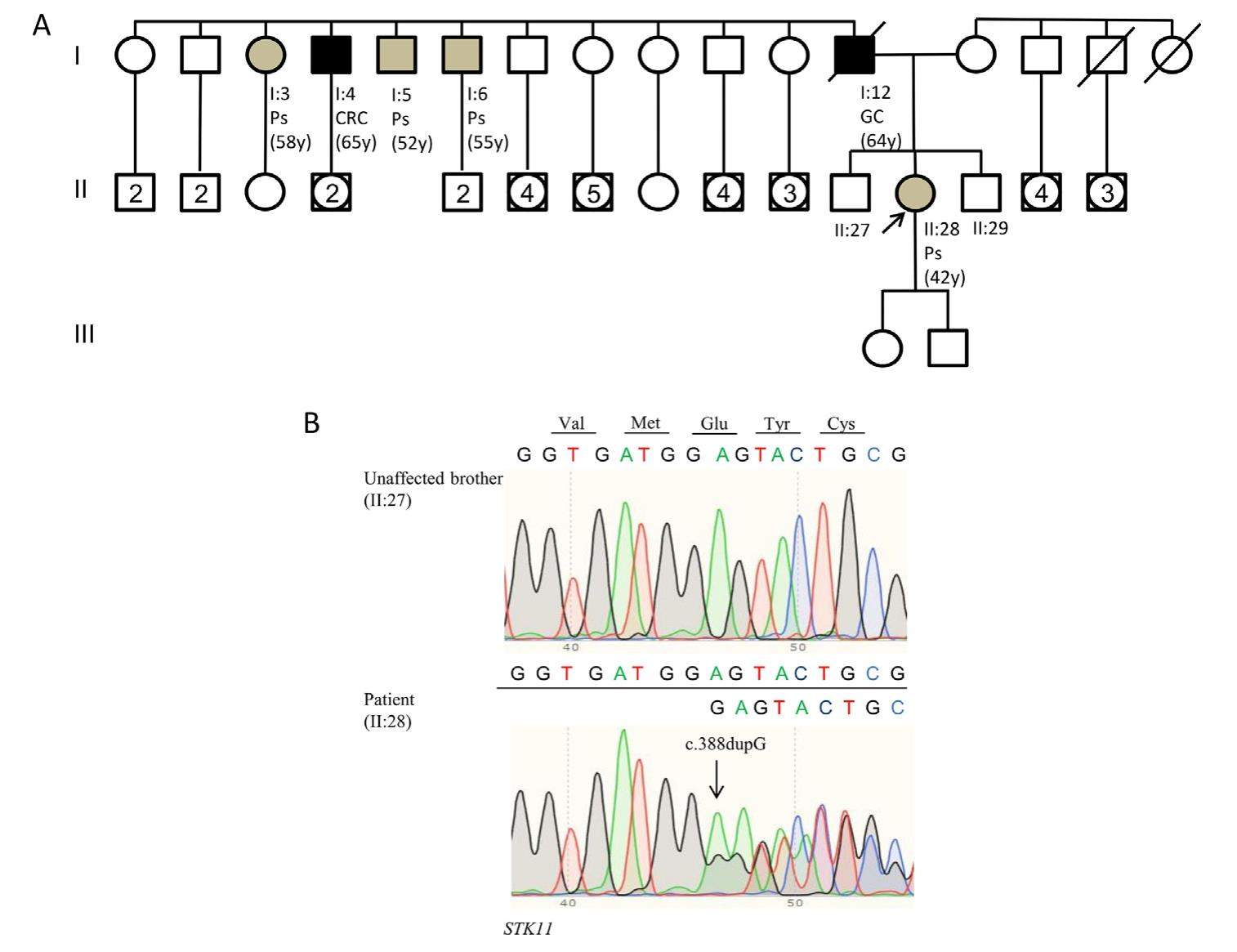
A novel STK11 gene mutation (c.388dupG, p. Glu130Glyfs*33) in a Peutz-Jeghers family and evidence of higher gastric cancer susceptibility associated with alterations in STK11 region aa 107-170


Peutz-Jeghers syndrome (PJS) is a rare autosomal dominant disorder characterized by mucocutaneous pigmentation and gastrointestinal (GI) hamartomatous polyposis and is associated with an increased risk of gastrointestinal, breast, gynecologic and other extra-GI malignancies. The serine/threonine kinase 11 (STK11) gene has been identified as a pathogenic factor in PJS. STK11 is a tumor suppressor gene located on chromosome 19p13.3 and includes 9 coding exons. The STK11 protein is composed of 433 amino acids (aa) and comprises a kinase catalytic region (aa 49-309) as well as N-and C-terminal regulatory domains. The catalytic region is further divided into 3 functional domains: an ATP-binding and orientation domain (aa 49-106), the catalytic site (aa 123-148), and a substratebinding domain (aa 171-225). STK11 plays an important role in tumorigenesis since it is implicated in numerous key biological processes involving cell metabolism, cell cycle regulation, cell polarity and motility, and angiogenesis. STK11 germline mutations have a wide genetic heterogeneity, and genotype-phenotype associations are not yet clearly established. Here we report a novel frameshift mutation involving the STK11 gene (c.388dupG, p. Glu130-Glyfs*33) in an Italian family, in which this mutation is associated with gastric lesions. In light of this finding, we performed a meta-analysis to ascertain whether STK11 nonsense and frameshift germline mutations may affect gastric cancer (GC) susceptibility in PJS patients based on their location. These data revealed a trend toward a higher risk of developing GC in PJS patients with STK11 truncating mutations in region aa 107-170.
